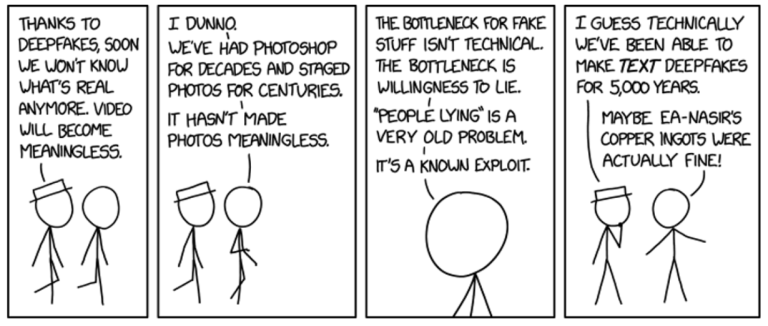Generative AI and Elections: Separating Hype from Reality
The emergence of generative artificial intelligence (GenAI) has ignited concerns about its potential to disrupt elections worldwide, sparking fears of a misinformation apocalypse. Pundits and experts warn that GenAI’s ability to create realistic fake content could easily sway voters, erode trust, and ultimately undermine democracy. However, a closer examination reveals that these fears are largely overblown, rooted more in hype than in the realities of human behavior and the dynamics of information consumption. While GenAI undoubtedly presents new challenges, its impact on election outcomes has been significantly overestimated.
One prevalent concern is that GenAI will flood the information ecosystem with misinformation, drowning out credible sources and manipulating voters. While GenAI can indeed produce false content more quickly and cheaply, this increase in supply does not automatically translate into increased consumption. Misinformation’s effectiveness hinges not on quantity but on demand. People actively seek out information that confirms their existing biases, and the internet already overflows with such content. GenAI’s contribution, therefore, is more akin to adding drops to an already overflowing ocean. Furthermore, the limited attention spans of voters, bombarded with political messages during elections, make it even more difficult for AI-generated content to cut through the noise. Even in low-information environments, GenAI content faces stiff competition from authentic sources and established narratives.
Concerns about the enhanced quality of AI-generated misinformation are similarly misplaced. While GenAI can create highly realistic fake videos and audio, the quality of misinformation is less important than its source and the narrative it supports. A poorly produced video from a trusted news outlet will have a far greater impact than a high-quality deepfake from an unknown source. The proliferation of “cheap fakes”—manipulated images or out-of-context statements—demonstrates that low-tech misinformation can be highly effective if it resonates with existing beliefs and prejudices. GenAI merely adds another tool to the arsenal of misinformation creators, but it doesn’t fundamentally alter the dynamics of persuasion.
The idea that GenAI will enable hyper-personalized misinformation at scale, swaying voters with individually tailored messages, is also largely unfounded. While personalized information can be more persuasive, the effectiveness of microtargeting in political campaigns has been consistently overstated. Successful personalization requires detailed, up-to-date data on individual voters, which is often difficult and costly to obtain. Even with access to such data, the inherent limitations of predictive models, combined with the influence of external factors and individual agency, make it challenging to accurately predict voter behavior and craft truly effective personalized messages. Moreover, reaching target audiences online is expensive and faces the same limitations of attention scarcity as other forms of political messaging.
The argument surrounding personalized persuasion assumes that GenAI will primarily be used for malicious purposes. However, governments and news organizations can also leverage GenAI to provide citizens with accurate and personalized information. Tailoring information to specific interests and identities can enhance civic engagement and improve access to relevant information for underserved communities. The key concern, therefore, is not whether personalization occurs but whether citizens are exposed to diverse viewpoints and quality information. This highlights the importance of responsible development and deployment of GenAI, ensuring that it serves democratic values rather than undermining them.
Ultimately, the anxieties surrounding GenAI and elections reflect a preoccupation with technological supply while overlooking the human demand for misinformation. The true threat lies not in the capabilities of GenAI but in the pre-existing biases and motivations that drive people to seek out and share false narratives. Focusing solely on the technological aspects risks overlooking the deeper societal issues that contribute to the spread of misinformation, such as political polarization, declining trust in institutions, and a lack of media literacy. Addressing these underlying problems is crucial to safeguarding democratic processes, regardless of the technological landscape.
While vigilance and appropriate regulatory frameworks are necessary, it is important to avoid overstating the risks of GenAI. The core challenges to democracy are primarily human problems, not technological ones. GenAI is a new tool, but it does not fundamentally alter the underlying dynamics of political persuasion or the vulnerabilities of democratic systems. By understanding the limits of GenAI’s influence and focusing on the human factors that drive misinformation, we can develop effective strategies to mitigate its risks and harness its potential for positive democratic outcomes. This requires not only technological solutions but also a renewed focus on media literacy, critical thinking, and fostering a healthy information environment. The conversation surrounding AI and elections must move beyond the hype and confront the underlying social and political challenges that shape our information landscape.


